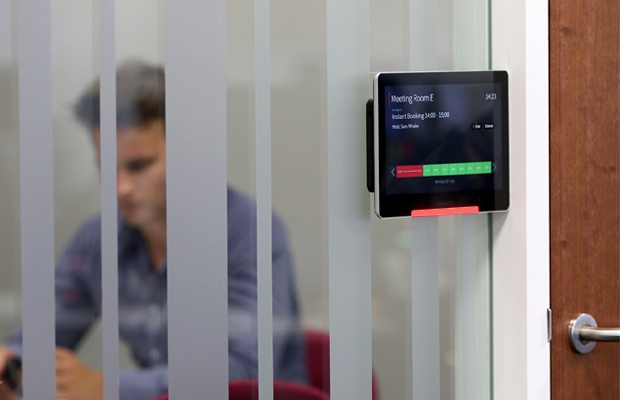
Even though there has been a recent uptake in collaborative spaces and a bigger focus on the optimization of office real estate, it’s estimated that unproductive meetings are still costing businesses $37billion every year.
Double-booked meeting rooms and pure unproductiveness helps to equate to this staggering number, along with “no-shows” where the meeting hosts and attendees fail to turn up at all. Typically, around 20% of meeting rooms within an organization are not being used at any one time, meaning most organizations do have the free space – it just isn’t showing up as available.
Take a look at this infographic about Meeting Room Occupancy
 All of these workspace challenges begin to affect employee morale and performance. People are facing fierce competition over meeting room bookings leading to a culture of “over-booking”, were people make their bookings months in advance and set recurring meetings to avoid future unavailability. This means people clog up the booking calendars and those that need rooms for more adhoc purposes cannot find any free space.
All of these workspace challenges begin to affect employee morale and performance. People are facing fierce competition over meeting room bookings leading to a culture of “over-booking”, were people make their bookings months in advance and set recurring meetings to avoid future unavailability. This means people clog up the booking calendars and those that need rooms for more adhoc purposes cannot find any free space.
It also creates a business culture of “sharking” outside of the meeting rooms, where people start to linger and swarm outside of rooms either to prompt people to get out or wait for the rooms to become available so that they can dive in next.
So how can you avoid a sharking culture and guarantee more efficient use of your rooms?
1. Room Booking Software
Implement a room booking system that people can access off their own accord and see when rooms are available. This will visibly identify where free space is, and stop double-bookings and confusion. The reporting data also gives facilities teams the information they need to enforce business rules and prioritize meetings or rooms for specific purposes.
2. Room Booking Screens
Screens outside meeting rooms are great for short notice, adhoc meetings as people can instantly locate free space and book them on the spot. Room screens will also limit the “sharking” outside of the rooms by clearly displaying information about when the meeting is due to start and end – stopping any interruptions and distractions to the meetings taking place.
3. Collaboration Zones
Increasing your break out space and collaboration zones is another way of freeing up your meeting rooms. People will feel less panicked when trying to find free space to collaborate and can easily utilise these flexible spaces if meeting rooms are not available.
4. Private Workspaces
A lot of the time meeting rooms get used by a single person for video conferencing calls or even private working. By providing your people with private areas for making calls and doing more private or quiet working, you’ll reduce the amount of rooms being booked for these types of activities and make more effective use of your pricier spaces.



